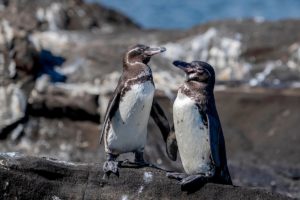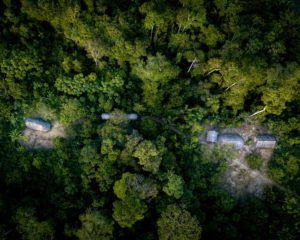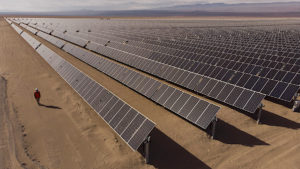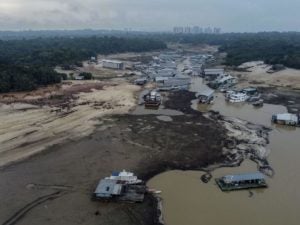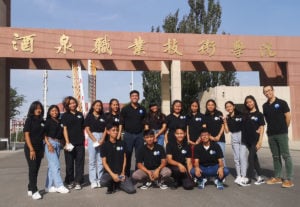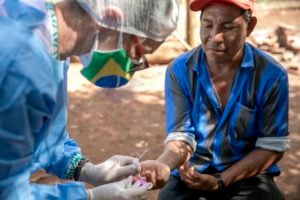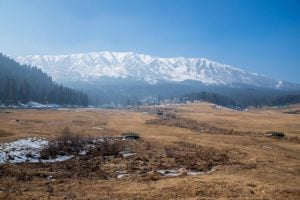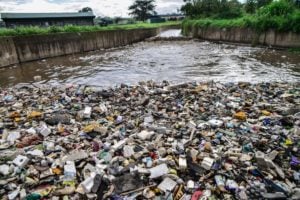After an eventful 2023 that brought Latin America’s environmental challenges into sharp relief, a new year has arrived. In the region and around the world, economic strains and a changing political landscape will continue to pose hurdles to action and cooperation on climate and environment issues in 2024. But there remain causes for optimism, with opportunities for progress on the horizon.
As 2024 begins, we look ahead to the key stories and political moments in Latin America that will shape environmental action and the region’s relations with China.
Democracy’s big year
2024 is being billed as the world’s biggest-ever year for elections, with votes in India, the US, Indonesia, South Africa and beyond sending billions of people to the polls.
In Latin America, Mexico’s June presidential election is the big one to watch: it could open paths to progress on the environment in an oil-dependent country widely seen as a climate laggard.
Energy will be a key issue in Mexico, following six years of tight control over the sector by the outgoing Andrés Manuel López Obrador (AMLO). He has restricted private investment in renewables and focused on energy sovereignty via fossil fuels. The leading opposition candidate, Xóchitl Gálvez, has called for greater ambition on the country’s energy transition. But there is also some promise in the emergence of Claudia Sheinbaum as the pick for AMLO’s Morena party. The former mayor of Mexico City, and an environmental scientist who has contributed to reports by the UN’s Intergovernmental Panel on Climate Change, Sheinbaum has also signalled support for renewables. She is currently the frontrunner but is yet to outline her energy proposals, and it is unclear how she may pick up the baton from AMLO and his pro-fossil fuel policies.
The region will also see presidential elections in El Salvador in February, and Panama and the Dominican Republic in May. Ahead of Panama’s vote, environmental issues are already shaping the race: last October, the controversial decision to award a Canadian company the concession for the Cobre Panama copper mine triggered fierce protests, which led President Laurentino Cortizo to call for a referendum over its future. In November, the supreme court ruled the renewed concession unlawful and ordered the closure of the mine, despite it generating around 5% of GDP. Aware of public anger over the issue – which incorporates concerns over the mine’s environmental impacts – the leading candidates have supported the ruling. Whoever wins will also need to keep an eye on the growing threats from drought on the Panama canal.
Uruguay will be the final Latin American country to elect a new president this year, with the first-round vote set for October. The country’s limits on consecutive presidential terms means it will fall on the successor to Luis Lacalle Pou to address national water woes, a particularly pressing issue in Montevideo: last year, a severe drought led to shortages of drinkable water in the capital area, and the proposed solutions have caused controversy. The new president will also be tasked with bolstering Uruguay’s strong record on clean energy, while overcoming the hurdles to becoming a regional hub for green hydrogen and accelerating the decarbonisation of its transport sector.
The Amazon at a crossroads
The Amazon rainforest faces an uncertain future – and its inhabitants an often overwhelming daily reality. In early 2023, a crackdown on the illegal mining that had caused a humanitarian crisis for the Yanomami people was launched in the largest Indigenous reserve in Brazil, near the border with Venezuela. Meanwhile, Brazil’s new Lula administration reduced deforestation rates by half in its first year, but struggled to cope with the arrival of El Niño: among the most challenging impacts was an historic drought in the Amazon river basin, which left some communities around the city of Manaus stranded and without drinking water.
El Niño is forecast to persist in the first few months of 2024 before stabilising, but the Amazon faces many threats beyond extreme weather. Across the countries that share the biome, there is a growing presence of transnational armed groups. These include Brazilian criminal gangs and Colombian guerrillas and paramilitaries. In regions plagued by organised crime, traditional communities face pressures from the advance of gold mining, and drug and arms trafficking. A 2023 report revealed Colombia and Brazil to be the world’s most dangerous countries for environmental activists; the next annual analysis should give a clearer picture of both countries’ efforts to combat this violence.
In Ecuador, Daniel Noboa’s new government is tasked with shutting down oil operations in the Yasuní National Park. Citizens voted to end this extraction in one of the Amazon’s most biodiverse places via 2023’s landmark national referendum. As he came to power in a snap election, Noboa only has until May 2025 to fulfil voters’ wishes. The 36-year-old president must also handle other crises, such as the constant blackouts being caused by water shortages; Ecuador depends on hydropower for over 80% of its electricity. So far, Noboa has announced a new electricity reform.
On the one hand, there are ambitious plans afoot to support the Amazon’s bioeconomy and keep the forest standing, but on the other, the pursuit of oil projects continues. Against this backdrop of contradictions, the region is heading into another decisive year.
China and Latin America in 2024
Following an occasionally bumpy ride ever since the arrival of Covid-19, 2023 was more stable for China-Latin America relations, with the return of President Lula in Brazil setting a more cooperative tone for engagement, alongside other centre-left leaders in the region. There is little to suggest any major disruption in the year to come, though Argentina’s new president, Javier Milei, may provide a few jitters. Despite having cooled slightly on the anti-China rhetoric of his election campaign, Milei has confirmed that Argentina will not be joining China in the BRICS developing economies bloc. Beijing, meanwhile, has reportedly suspended its US$6.5 billion currency swap line with the country until relations have been clarified.
Agriculture, mining and energy will remain central to trade and investment relations between China and Latin America in 2024, while new avenues for cooperation around conservation may open up.
We will be watching to see how China’s stuttering domestic economy impacts state-linked overseas investment channels such as the Belt and Road Initiative. The industries dubbed its “new three” (solar cells, lithium batteries and electric vehicles) have proven resilient however, driving China’s exports in 2023. The new three will be key areas of cooperation in Latin America, particularly lithium investments: given the metal’s importance for global energy transitions, China and other international investors are likely to focus on lithium enterprise in Argentina, Bolivia and Chile. As for EVs, last year saw a wave of new investments by Chinese carmakers in Brazil and Mexico. This is likely to continue in 2024, with the countries seen as springboards into the regional and US markets.
At COP28 in Dubai during November and December, 19 Latin American and Caribbean countries joined the agreement to triple global renewable energy capacity by 2030. This year will begin to reveal how they will translate that into action – and China will no doubt have a role to play. China did not sign the pledge (even though analysts have described it as a “conservative” goal for the country), but as the world’s major supplier of renewable energy technologies, including 80% of global solar panel production, it will be an essential partner in Latin America’s efforts to accelerate – and possibly finance – its energy transition.
Colombia was recently announced as host of the next UN biodiversity summit, COP16, to be held in late October. China presided over COP15 in 2022 and has welcomed Colombia’s hosting, so opportunities may open up for cooperation in driving conservation initiatives across Latin America. Participants will be looking to progress the implementation of the historic Kunming-Montreal Global Biodiversity Framework, established at COP15.
Argentina: What now for the environment?
The victory of radical right-winger Javier Milei in Argentina’s November presidential elections sparked great uncertainty in the country’s environmental sector. During his campaign, Milei expressed outright climate change denial and regularly called it a “socialist hoax”. Among other contentious proposals, he suggested permitting companies to freely pollute the country’s rivers.
Upon taking office in December, Milei surprised many by sending a representative to COP28: Marcia Levaggi, Argentina’s new secretary for foreign policy. Levaggi provided assurances that Argentina will continue to fulfil its climate commitments under the Paris Agreement, telling Reuters: “Milei is a liberal, he’s a libertarian, and he believes in market forces. And the market demands to include measures to address climate change.”
However, Milei began to enact his promised sweeping cuts to the state during COP28. That included shuttering Argentina’s environment ministry and relegating it to sub-secretariat status within the interior ministry. Among other functions, the ministry had served as the main authority in applying forestry and glacier laws, and ensuring public participation in infrastructure planning processes.
Argentina’s Environment and Natural Resources Foundation says this relegation “will significantly limit the possibilities of establishing dialogues and policies that involve different areas of government.” However, the NGO also stressed that individuals and organisations will continue to work to defend the right to a healthy environment and the needs of future generations.
Argentina’s security ministry has meanwhile turned its attention to the streets, announcing new measures against protests. One proposal is to restrict gatherings of more than three without permission, which would of course affect environmental activism.
Will the energy transition be just?
In an historic first for the UN’s climate conferences, COP28 concluded with all parties agreeing to transition away from fossil fuels in a “just, orderly and equitable” manner. The text calls on parties to triple global renewable energy capacity and double the annual rate of improvement in energy efficiency by 2030. (Less promisingly, the text’s perceived allusion to natural gas by endorsing “transitional fuels” received criticism.)
Indigenous leaders in attendance demanded greater attention for their communities as the world looks to meet these goals. Socio-environmental conflicts have already erupted around some clean energy projects, and these leaders seek to break this cycle, which has been endemic in the fossil fuel industry. During 2024 we will continue to report regularly on these groups’ interventions and participation in such projects.
Colombia’s northern region has been earmarked as the “epicentre” of the country’s energy transition by the government, but the arrival of wind farms here has brought disruption to the Wayúu people and raised tensions among communities. Meanwhile in Ecuador, communities have denounced the mismanagement of hydroelectric plants that have caused historically large floods. And on the cusp of a lithium boom, populations high up in the Andes of Bolivia are opposing its exploitation.
“This just transition must recognise Mother Nature as a subject of rights, as well as the lives that inhabit our territories. When talking about renewable energy, we believe that our peoples must be consulted and their consent must be obtained,” Ketty Marcelo Lopez, president of the National Organisation of Andean and Amazonian Indigenous Women of Peru (ONAMIAP), told reporters at COP28.
In this context, a key moment in 2024 will be the Escazú COP3 in Chile. This will be the third meeting of parties to the landmark Escazú Agreement, a regional treaty that seeks to ensure the representation and protection of environmental defenders. A just energy transition should be a top priority for the delegates who converge in Santiago this April.






